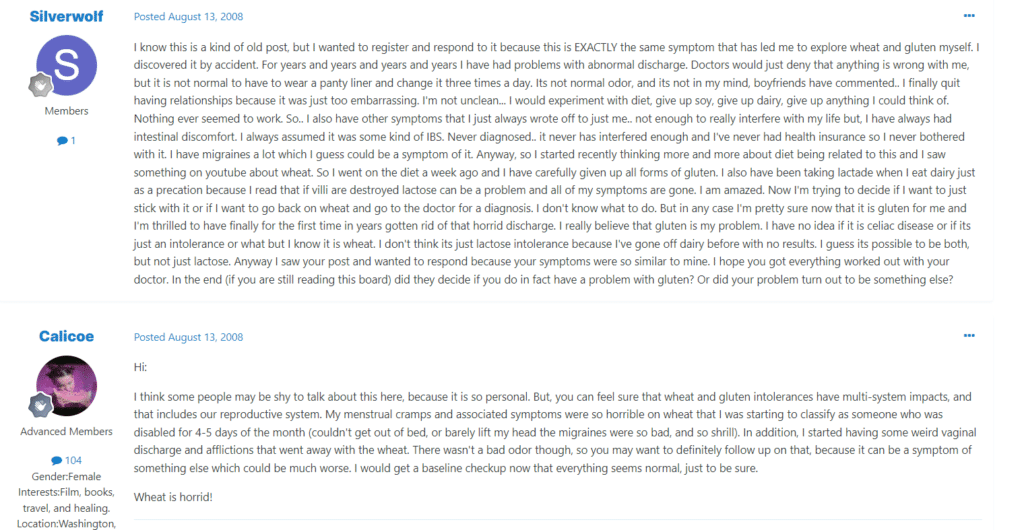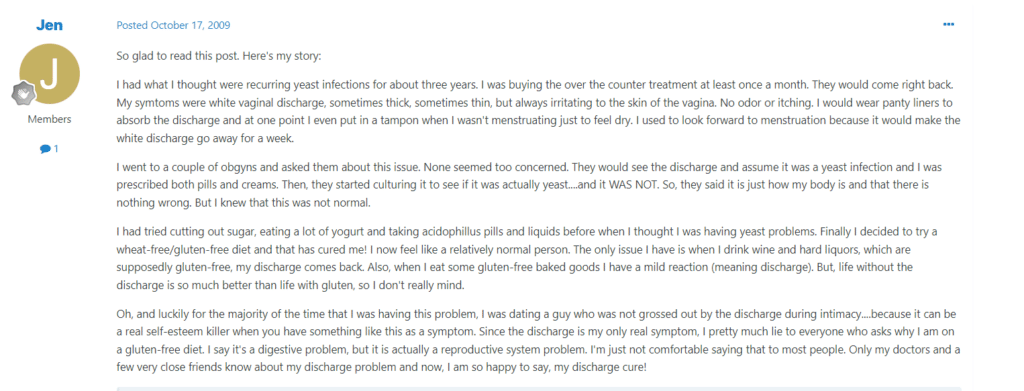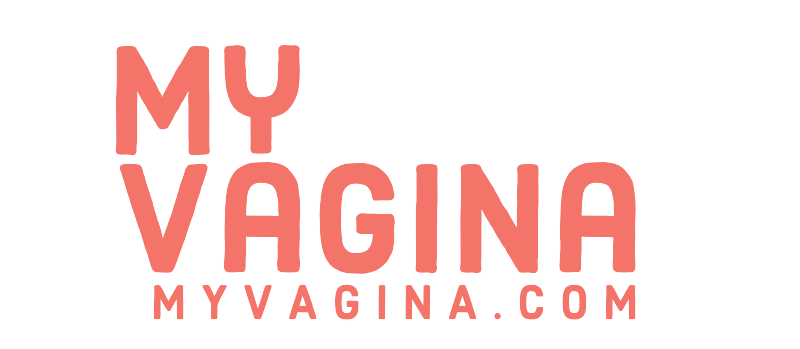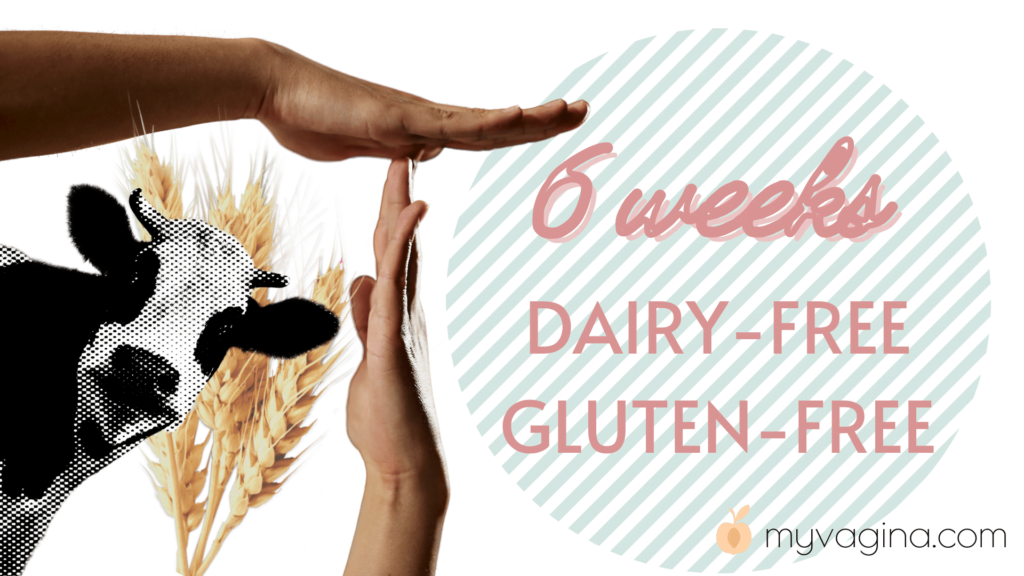You may be wanting to do an experiment with your diet to try to solve some of your vaginal and other symptoms. This is a worthy experiment and is encouraged – you might be eating something that is not agreeing with you, but the symptoms may not be what you expect.
For example, gluten or dairy could make you feel tired and anxious, rather than give you a stomachache.
Going dairy-free and gluten-free can make a huge difference to how you feel overall, along with vaginal or urinary tract symptom improvements. Until you try, you’ll never know, so let’s get cracking!
Doing the GF and DF diet
The usual time frame if you’re doing an experiment with gluten and dairy is six weeks. If you don’t do well with gluten or dairy, niggling symptoms will fade away, for example, digestive problems like diarrhoea, bloating, gas or constipation. Vagina symptoms may also see a slow decline.
Not all problems are caused by gluten and dairy, but you might be surprised how you feel without them. It’s definitely worth a try. If you feel nothing, either you’ve been doing the diet wrong or these components are not an issue for you.
If you’re sensitive to gluten/wheat and dairy, it doesn’t mean you always will be or that you have an allergy. It just means you’re better off without them for the time being. You can always add them back in later – this is not forever, it’s an experiment. Keep a diet and symptom diary.
Aims of the GF and DF experiment
- Reduce inflammation in the intestinal lining
- Reduce possible immune reactions and increases in histamine
- Eliminate intake of lactose and casein in dairy and gluten in wheat
- To see how your body feels without the constant company of these two old frenemies
- We are NOT suggesting you are celiac or allergic to dairy – but you might be, so monitor symptoms and seek help from a gut-experienced healthcare provider (holistic nutritionist, naturopath, dietician, functional medicine doctor)
- While you might feel a lot better overall on this diet, it might not be driving your vaginal symptoms
- It’s an experiment! Be strict, set time frames and commit to the process – be sciency!
Dairy-free means:
- Excluding all cow’s milk products – milk, ice-cream, chocolate, cheese, cream
- Checking ingredients list for milk powder on chips, snacks and in crema
- Butter is usually ok – it’s a fat and is not a source of casein or lactose
- Non-dairy (non-cow) mammal milk is often a source of lactose, even small amounts, so don’t substitute cow’s milk for other mammal milk
- Substitute milk products for almond, coconut or rice milk (avoid oat milk, oats contain some gluten)
- You can eat gluten-free bread and pasta, but remember if you live off carbs, you can still end up with a tummy ache due to a lack of fibre from vegetables
Gluten-free means:
- All wheat products or products containing wheat (wheat bread, wheat pasta)
- All products containing gluten (soy sauce, tomato sauce, etc.) – check labels
- Find gluten-free alternatives – there are plenty around usually available at the supermarket
- If you can’t go full gluten-free, go wheat free
How to survive going gluten and dairy free
Cooking at home is usually the best way to do this experiment well, so you know exactly what’s going into your food. Planning ahead is the key to survival here, and finding viable alternatives for the foods you like.
There are a lot more options to choose from now in the gluten-free section of stores, as knowledge of celiac disease (gluten allergy) has increased. If you are into bread, you can find recipes online to make your own gluten-free bakery items.
The point here is not to switch out gluten and dairy for high-sugar high-fat alternatives, but to try to improve your eating habits at the same time. If you swap wheat bread and pasta for gluten-free bread and pasta, don’t expect to feel awesome.
If you’re not into cooking…
- Find pre-made salads at the supermarket, pick out any cheese and croutons, and avoid the dressing – it likely contains wheat or gluten, and make your own with vinegar and olive oil, find recipes online
- Pre-made coleslaw in a bag is a legit food source – fry it or eat it raw, use your own dressing (vinegar, olive oil, find simple dressing recipes online)
- Opt for frozen gluten-free and dairy-free ready meals
- Use a specialist meal delivery service that caters to dietary disabilities
- When eating out or getting delivery/takeaway, choose Asian foods such as Vietnamese, Thai and Japanese and avoid Italian and burgers/pizza
- Check all your sauces and condiments at home and hide, give away or throw out any that contain gluten or dairy, or loads of preservatives and colours
- Avoid the temptation to eat crap gluten-free high-carb high-sugar low-quality food during this experiment – your body isn’t magic and if you are filling it full of garbage but “going gluten and dairy free” as a token gesture, you may still find yourself without results
- Get support online! You are not the only one!
Personal experiences going gluten free with vagina problems








